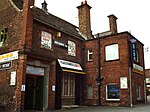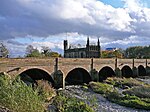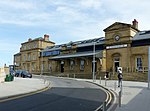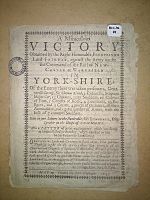Battle of Wakefield

The Battle of Wakefield took place in Sandal Magna near Wakefield in northern England, on 30 December 1460. It was a major battle of the Wars of the Roses. The opposing forces were an army led by nobles loyal to the captive King Henry VI of the House of Lancaster and his Queen Margaret of Anjou on one side, and the army of Richard, Duke of York, the rival claimant to the throne, on the other. For several years before the battle, the Duke of York had become increasingly opposed to the weak King Henry's court. After open warfare broke out between the factions and Henry became his prisoner, he laid claim to the throne, but lacked sufficient support. Instead, in an agreement known as the Act of Accord, he was made Henry's heir to the throne, displacing from the succession Henry's and Margaret's 7-year-old son Edward, Prince of Wales. Margaret of Anjou and several prominent nobles were irreconcilably opposed to this accord, and massed their armies in the north. Richard of York marched north to deal with them, but found he was outnumbered. Although he occupied Sandal Castle, York sortied from the castle on 30 December. His reasons for doing so have been variously ascribed to deception by the Lancastrian armies, or treachery by some nobles and Lancastrian officers who York thought were his allies, or simple rashness or miscalculation by York. He was killed and his army was destroyed. Many of the prominent Yorkist leaders and their family members died in the battle or were captured and executed.
Excerpt from the Wikipedia article Battle of Wakefield (License: CC BY-SA 3.0, Authors, Images).Battle of Wakefield
Kirkgate, Wakefield Belle Isle
Geographical coordinates (GPS) Address Nearby Places Show on map
Geographical coordinates (GPS)
| Latitude | Longitude |
|---|---|
| N 53.68 ° | E -1.4922222222222 ° |
Address
Leah Bramwell
Kirkgate 170
WF1 1UD Wakefield, Belle Isle
England, United Kingdom
Open on Google Maps











